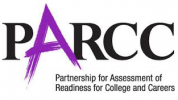Return To Teachers Speak
What’s in the Press Release and Reports
As of November 13, the New Jersey Department of Education released the NJ ASK results for the 2012-2013 school year. The State’s press release explains that this year, many of these assessments have been aligned to the Common Core State Standards (in grades 3-8 for ELA and in grades 3-5 for math). Next year, ELA and math will be Common Core-aligned in both subject areas for grades 3-8. The good news is that New Jersey, typically a top-performing state in these assessments, has shown a strong performance yet again.
In “The Nation’s Report Card”, a comparison of states across the country (performed by the National Assessment of Educational Progress, or NAEP), New Jersey scored second best in reading at the 4th Grade, New Jersey ranked fourth for 4th Grade level and first in 8th grade and second for 8th grade reading.
One area of concern that still exists is a marked achievement gap. When comparing White students and economically advantaged students to African-American and Hispanic students and/or economically disadvantaged students, a major gap exists. In Math and ELA, a gap of approximately 30 points exists between White students and African-American or Hispanic Students for math and ELA. With respect to socio-economic status, there is anywhere from a 24- to 31- point gap (for both subjects) between the economically disadvantaged students and the non-disadvantaged test takers.

How Parents Can Use This Information and Take Action
What does this mean to you, as a parent?
If you visit the New Jersey Department of Education’s website, you can click on the scores by grade level and county/district/school. Here, you can view a spread sheet that breaks down test scores as an executive summary, by demographic groups, or you can view graphs regarding those who scored proficient and above. Though this will not provide you with information about your son or daughter specifically – you will need to receive your child’s individual report for that – you can see how your child’s school is faring overall and in comparison to other schools in the state.
Until you receive the report regarding your child’s progress, you can still use this information to note areas of general weakness and strength. Consider the following actions you can take to help your child improve:
• Note general trends. Maybe your school did well with math, but ELA was a bit weaker. In this case, think about ways you can enhance his or her skills – maybe the school offers after-school programs or tutoring. Maybe you’ll decide to help him/her become more comfortable with test-type questions through apps or practice books. Or maybe you want to increase the amount of time your child reads independently at home.
• Once they are released, use the individual report to target your child’s strengths and weaknesses. Your child’s report will give you a better picture of the types of problems your child scored well in, along with weaknesses. For instance, you may find that your child does well with algebraic concepts but flounders with geometry. This is good information so that when these topics come up in school, you may need your child to be tutored, get help from a sibling or classmate, or spend a little extra time studying to bring those skills up to par. And don’t forget to build on success: if your child is a superb reader, celebrate this by supplying him/her with trips to the library, books as gifts for special occasions and holidays, etc. This not only accentuates the positive but also allows your child to increase his or her confidence in an area of strength.
• Remember that one test does not measure the total child. In an age of accountability and testing, it’s easy to fall into the trap of allowing test scores to become the be-all and end-all to judge progress and proficiency. But as a parent, you know that your child has good days and bad, as well as talents and areas of difficulty. To view your child’s score as a complete profile of his or her achievement would be an error, as your child’s education is comprised of more than Math and ELA classes. Moreover, what your child has learned during the school years is more than just the questions that appear on this test. Celebrate your child’s unique strengths, on the test and in other areas (music, art, sports, interpersonal skills, etc.), and work on the weaknesses. By maintaining a balanced view of testing, you’ll send a positive message to your child that you expect effort and achievement but also can recognize other facets of your child’s life.
Resources
NJ DOE press release: http://www.state.nj.us/education/news/2013/1113ask.htm
NJ DOE score reports: http://www.state.nj.us/education/schools/achievement/
Lumos Learning test practice books
Lumos StepUp™ App (with practice tests)





Hi! I’ve be?n following your blog for some time now and finally got t?e bravery to go ahead and give you a shout out fr?m Austin, T?xas!
Just wanted to mention keep up the g?eat ?ork!